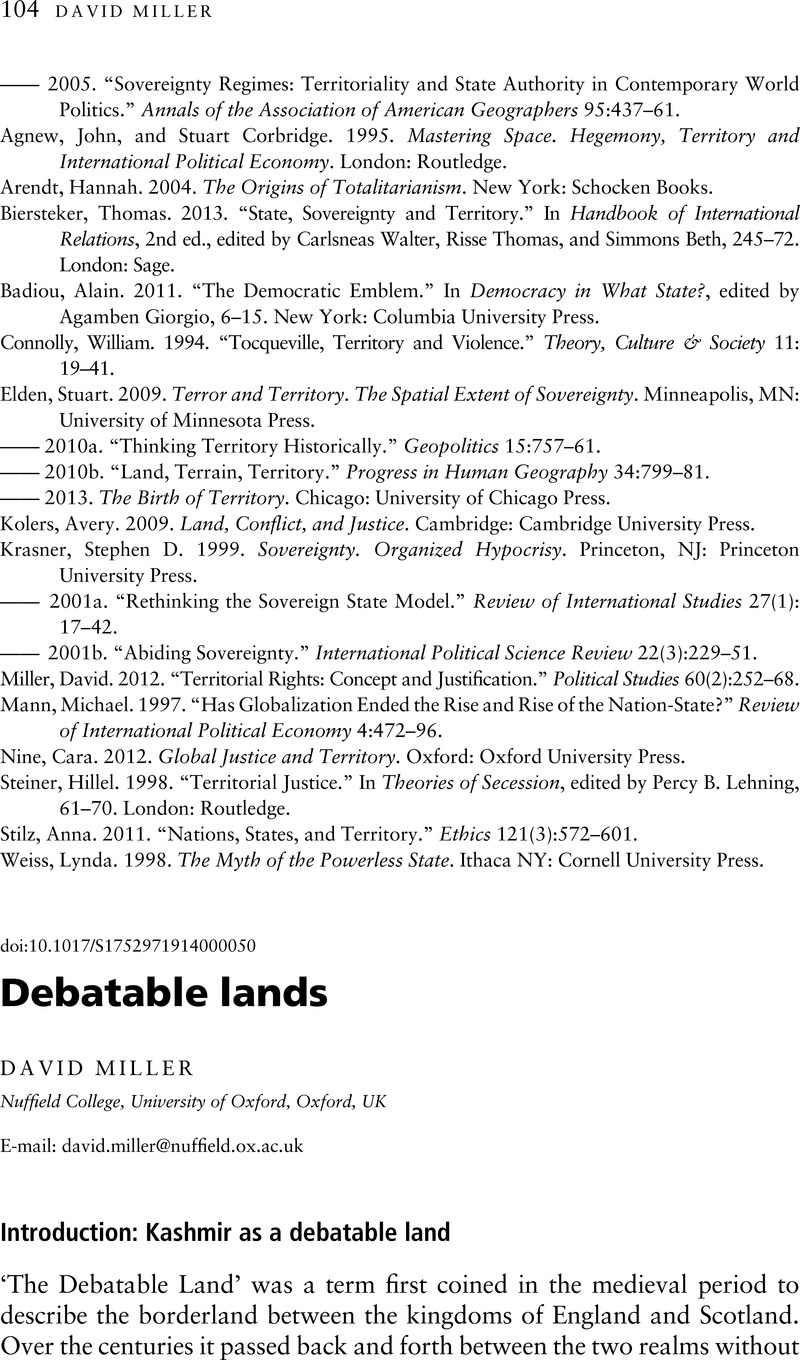Crossref Citations
This article has been cited by the following publications. This list is generated based on data provided by Crossref.
Branch, Jordan
2016.
How should states be shaped? Contiguity, compactness, and territorial rights.
International Theory,
Vol. 8,
Issue. 1,
p.
1.
Banai, Ayelet
2016.
Sovereignty over natural resources and its implications for climate justice.
WIREs Climate Change,
Vol. 7,
Issue. 2,
p.
238.
Miller, David
2016.
Neo-Kantian theories of self-determination: a critique.
Review of International Studies,
Vol. 42,
Issue. 5,
p.
858.
Angell, Kim
2017.
A Forward-Looking Justification of Territorial Rights.
Political Studies,
Vol. 65,
Issue. 1,
p.
231.
Miller, David
2019.
Lockeans versus nationalists on territorial rights.
Politics, Philosophy & Economics,
Vol. 18,
Issue. 4,
p.
323.
Ratner, Steven
2019.
International law and political philosophy: Uncovering new linkages.
Philosophy Compass,
Vol. 14,
Issue. 2,
Kaya, Zeynep N.
2020.
Mapping Kurdistan.
Reibold, Kerstin
2023.
Global Encyclopedia of Territorial Rights.
p.
1.



